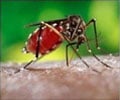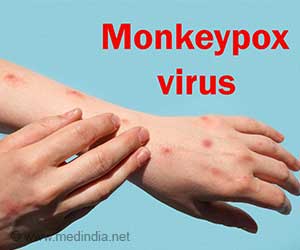Mathematical models can effectively predict and track malaria transmission trends, ultimately quantifying the efficiency of various treatment strategies.

‘A malaria transmission model that considers three distinct factors: climate, the extrinsic incubation period (EIP), and the vector-bias effect has been explained by researchers.’





In a paper
publishing in the SIAM Journal on Applied Mathematics on
January 24, 2017 Xiunan Wang and Xiao-Qiang Zhao explain a malaria
transmission model that considers three distinct factors: climate, the
extrinsic incubation period (EIP), and the vector-bias effect. Using data from Maputo Province, Mozambique to simulate transmission trends, the authors ultimately present a possible way to limit the disease's transmission.
One of the most common infectious diseases in the world, malaria causes public health problems and depresses the economy of infected areas. When untreated or treated improperly, the disease can result in fatalities.
Despite impressive control measures and increased prevention techniques, which have reduced the global malaria mortality rate by 29% over the last six years, 3.3 billion people throughout 97 countries and territories still face a risk of infection.
According to the World Health Organization, there were 212 million cases of malaria in 2015; approximately 429,000 resulted in death. Sub-Saharan Africa continues to exhibit a disproportionately high number of outbreaks and fatalities.
Advertisement
The EIP is the length of time a parasite needs to fully develop in a mosquito and migrate to its salivary glands in preparation for transmission. Female mosquitoes live anywhere from three to 100 days, and a typical EIP ranges from 10 to 30 days. "Only those mosquitoes that live long enough to survive the EIP can transmit malaria," Wang said.
Advertisement
She and Zhao treat all parameters related to humans as constants but assume that mosquito-related parameters are periodic functions, thus incorporating seasonality into the model. Two additional parameters quantify the vector-bias effect, the probability of a mosquito biting an infected or susceptible human. And a constant time delay represents the EIP. The authors apply their model to published data from Maputo Province and simulate transmission trends in the area; the simulated curve matches the real-data curve for transmission.
"The numerical simulations for monthly new malaria cases are well consistent with the real data from Maputo Province," Wang said. "This suggests that such a model may give a more accurate prediction of the disease transmission."
Based on their findings of the model's global dynamics, Wang and Zhao discover that malaria will continue to exhibit seasonal fluctuation in Maputo Province in the coming years. More importantly, they show that a shorter EIP directly corresponds with increased malaria transmission. Thus, extending the EIP of mosquitoes could help control the disease and limit its spread. Although this is currently not easy, especially as climate change causes global temperatures to slowly rise, it is certainly possible.
"Medical researchers may develop some drugs with such an effect that once a mosquito bites a malaria-infected patient who takes the drugs, the EIP of parasites in that mosquito will be prolonged," Wang said. The development of these EIP-extending drugs could lead to a decrease in the spread of malaria and its dire effects.
Source-Eurekalert










